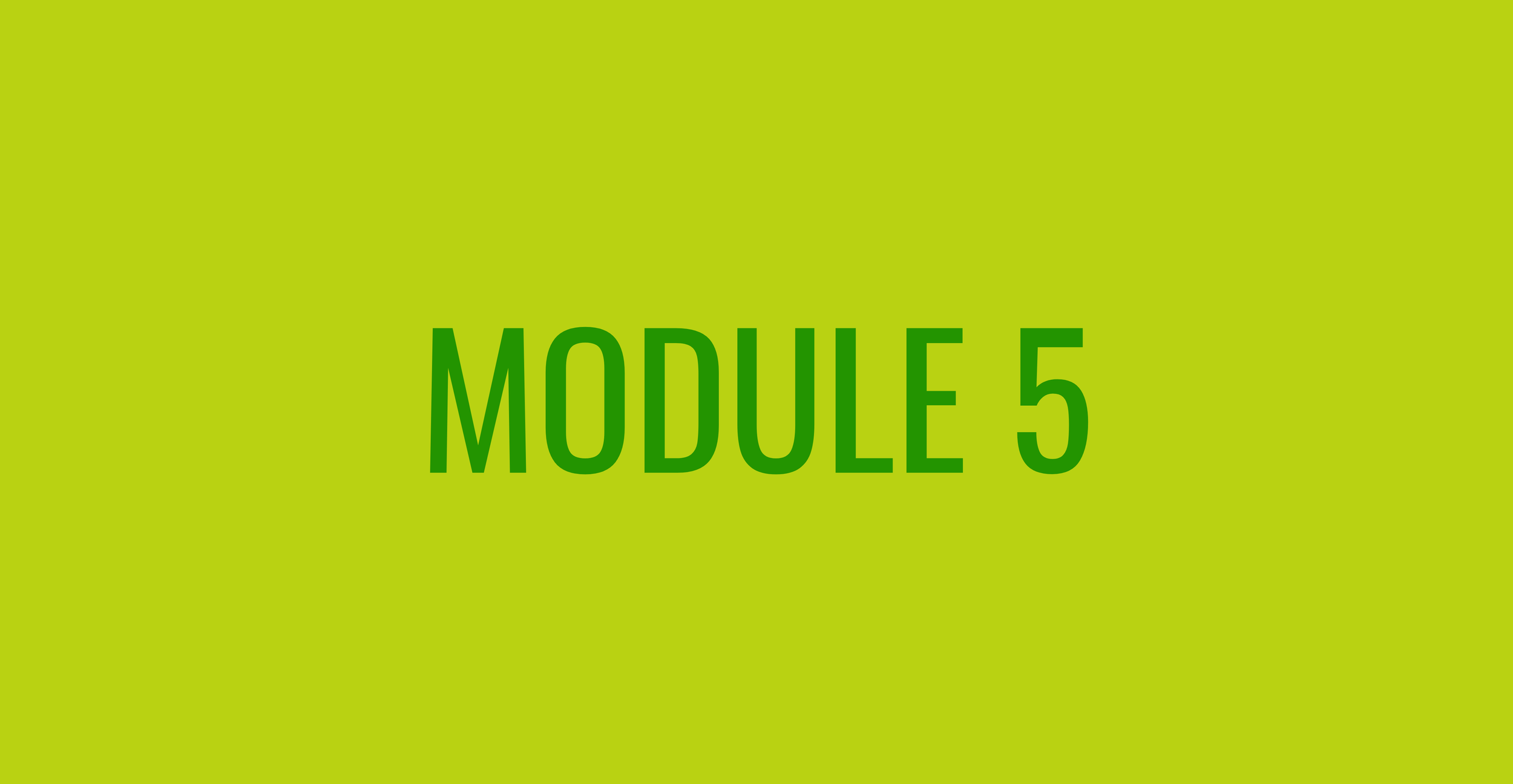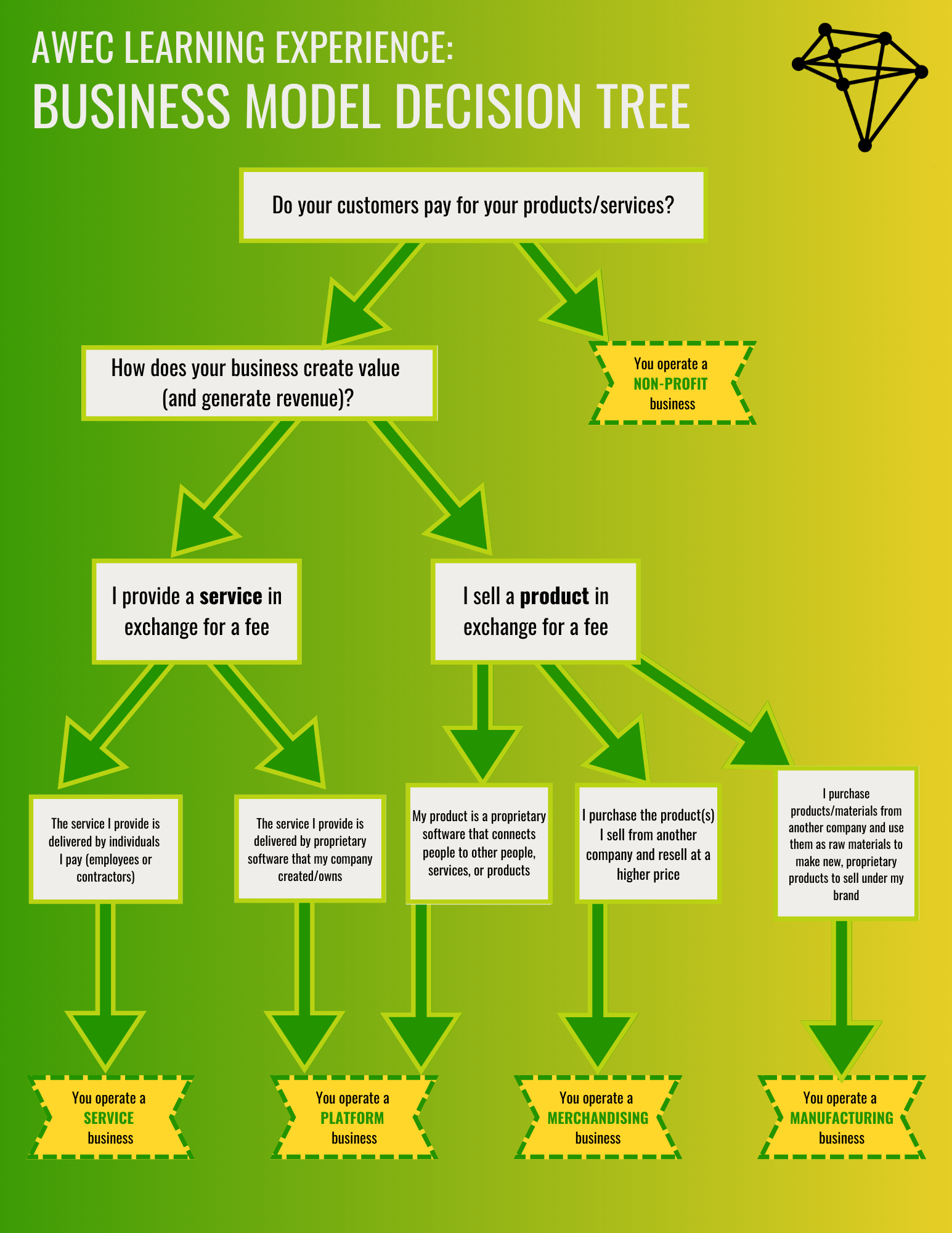
Business Model
Welcome to Module 5 which will cover everything you need to know about business models! If you are just joining us, we recommend you start by completing Module 1: How to Write an Application 101, Module 2: Value Proposition, Module 3: Customers, and Module 4: Target Market & Market Size.
Overview
In the words of one of our favorite AWEC session leaders, the primary purpose of any business is to make money. If your business is not making money in some way, it’s not actually a business but rather a hobby or a project. A business model is a strategic plan of how your business will make money. The model describes the way your business will take its products/services and offer them to the market to drive sales. Your business model determines what products/services your company will sell, how it will promote its products/services, which customers it will target, and what revenue streams to expect. For this module, we will focus on four overarching types of business models (note that there are many additional ways to differentiate your business models within these broad categories, which you can explore in our Resources for Further Learning).
Four Types of Business Models
Service Business - a service business provides professional support to its clients. If you operate a service business, it means that you don’t have a tangible product; instead, your business provides an activity or performs a task for a fee, and this task is directed to help a business or an individual. Service businesses can be delivered physically or through virtual platforms. Examples of service businesses include:
Business services, such as accounting, advertising, engineering, legal, financial services, education/trainings
Personal services, such as tailoring, beauty salon services, photography, interior decorating, transportation, logistics
Hospitals and clinics, schools, banks
Hotel and lodging, tourism activities
Merchandising Business - a merchandising business generates revenue by selling goods. As a merchandising business, you buy products at wholesale price and sell the same products at retail price. These types of businesses are popularly referred to as "buy and sell" or "reseller" businesses. Your business makes profit by selling its goods at prices higher than the purchase costs. Examples of merchandising businesses include:
Supermarkets
Clothes/accessories stores
Pharmacies
Beauty stores
Bookstores
Home décor stores
Manufacturing Business - a manufacturing business uses raw materials, parts, and components to assemble finished goods. If you have a manufacturing business, you buy products from other sellers with the intention of using them as raw materials to make a new product for sale. As a manufacturing business, you can choose to sell your products directly to consumers, other manufacturers, distributors, or wholesalers. Examples of manufacturing businesses include:
Food processing, such as producing cereals, frozen foods, dairy products, baby foods
Wood and metal works, such as in building cabinets, tables, chairs
Sanitary towels production
Platform Business - a platform creates value by facilitating exchanges between two or more interdependent groups, usually consumers and producers and typically facilitated by technology. If you own a platform business, your business facilitates interactions across many participants; these interactions can be short-term transactions like connecting buyers and sellers or long term transactions, like building a community. Platforms businesses create communities and markets with a network effect that allows users to interact and transact. Examples of platform businesses are:
Home rental - AirBnB
Taxi service - Uber, Lyft
Online marketplace - Jumia
Online networking - Facebook
Agency - Booking.com, Wakanow
Knowing your business model is very important to the success of your business because it will help you understand how the business will generate revenue. As a business owner, your business model will help you understand your customers, how your products/services will reach said customers, and what you can do to remain competitive. Once you know the appropriate business model for your business, certain factors become very clear; your business goal, your target market and how your business operates.
It is important to note that many businesses often employ multiple business models, especially as they expand and diversify their sources of revenue. For example:
A financial services company (service business) might create a digital tool to manage financial transactions (platform business) in response to customer needs
A beauty salon (service business) might resell hair and beauty products (merchandising business) to its customers
A digital marketplace (platform business) might create its own unique product line (manufacturing business)
A farm (manufacturing business) might also sell products from a neighboring farm (merchandising business) to meet customer demand
When asked about your primary business model, we suggest focusing on the one that comprises the majority of your daily basis activities and serves as your main source of revenue. However, we encourage business owners to explore multiple business models (especially as you plan for business growth) as a way to protect against future business risks.
Learning Tools
AWEC is an experiential, applied learning program, which means we promote business growth by having fellows immediately apply what they learn to their own business. We have created the following tools to help you apply the knowledge from this module to your business. We encourage you to download the tools below to strengthen your application AND your business!
Business Model Decision Tree
Instructions
Understanding your business model is key to the success of your business as it determines how you will generate revenue.
This clarity is necessary in order to inform how you spend your time and resources and plan for future business growth.
By answering a few key questions using the AWEC Business Model Decision Tree, you can quickly determine your primary business model.
Well done to you for completing your fifth module. You can now move on to Module 6: Goal Setting.





